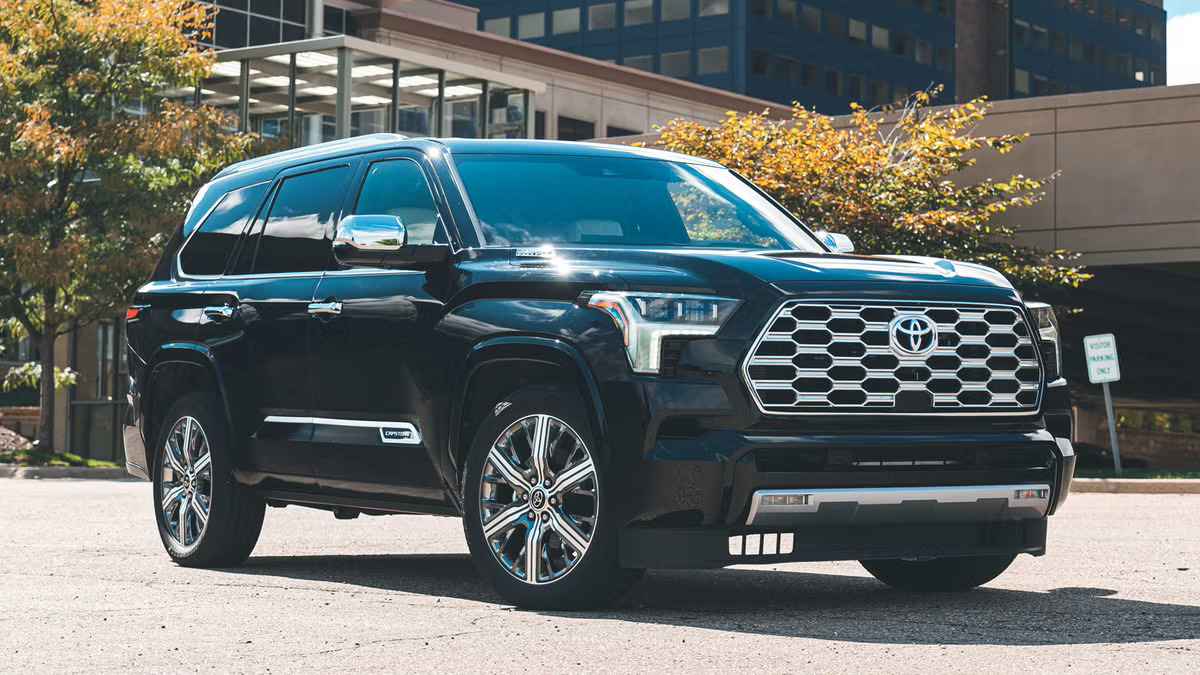In the ever-evolving world of automotive design, where horsepower, 0-to-60 times, and autonomous driving tech often dominate the conversation, there exists a surprisingly overlooked yet deeply telling detail: the humble cupholder. Often taken for granted, this small, cylindrical indentation in your car’s interior is more than just a place to stash your morning coffee.
It’s a window into cultural habits, engineering priorities, and the very soul of a vehicle’s design philosophy.
While some cars are practically overflowing with cupholders—offering one for every seat, pocket, and even door—others seem to scorn the concept entirely, relegating beverage storage to an afterthought, if it exists at all.
At first glance, the number of cupholders in a car might seem like trivial information. Who really cares whether a car has eight or eighteen? But take a closer look, and you’ll see that cupholders reflect the lived realities of car owners around the world.
In North America, for example, where road trips are common and drive-thru culture reigns supreme, cupholders are not just helpful—they’re essential. People commute long distances, often eating and drinking in their vehicles out of necessity.
Car interiors have become more than just cabins for driving; they’ve turned into mobile living rooms and offices. In this context, a vehicle loaded with cupholders isn’t excessive—it’s pragmatic.
On the other end of the spectrum are cars that seem to intentionally avoid cupholders. These are usually high-performance sports cars or European-designed vehicles that prize aesthetics and driving purity over day-to-day practicality. For these automakers, adding cupholders may be seen as cluttering the driver-centric layout or diluting the brand’s identity.
In a stripped-down sports car, every gram counts, and every square inch must be functional, not frivolous.
The absence of cupholders in such vehicles speaks volumes—not just about the car’s intended use, but also about the manufacturer’s assumptions about its drivers. If you’re in a Ferrari or Lotus, the thinking goes, you should be more focused on throttle response than thirst.
The dichotomy between these two extremes reveals fascinating truths about the car industry. Some vehicles, particularly minivans and large SUVs, go out of their way to include as many as 18 cupholders, ensuring that every occupant—and then some—can secure their beverage of choice.
In contrast, several of the world’s most exotic and enthusiast-focused cars offer only one poorly placed holder, or none at all.
These decisions aren’t random—they’re intentional, tied to target markets, brand ethos, and cultural norms. A Chrysler Pacifica with a dozen cupholders signals comfort, family-friendliness, and daily usability. A Mazda Miata with barely one drink slot, on the other hand, signals driving purity and minimalist sensibility.
In this article, we’re taking a closer look at both ends of the spectrum. We’ll first explore five cars that practically function as beverage buffets, where cupholders abound in every crevice of the interior. These cars are masters of convenience and understand the day-to-day demands of modern life.
Then we’ll shift gears—literally and figuratively—and examine five cars that offer little to no cupholder consideration, shining a light on a completely different set of design priorities. This contrast isn’t just fun trivia—it’s a deep dive into what automotive brands value and how they see their drivers.
So whether you’re a caffeine-fueled commuter looking for a rolling drink station or a performance purist who scoffs at the thought of sipping soda at 7,000 RPM, this article has something for you.
Welcome to a world where cupholders—those small, often ignored compartments—speak volumes about what your car was really built for.
Also Read: 5 SUVs With Best Panoramic Roofs And 5 With Small Sunroofs
5 Cars with the Most Cupholders
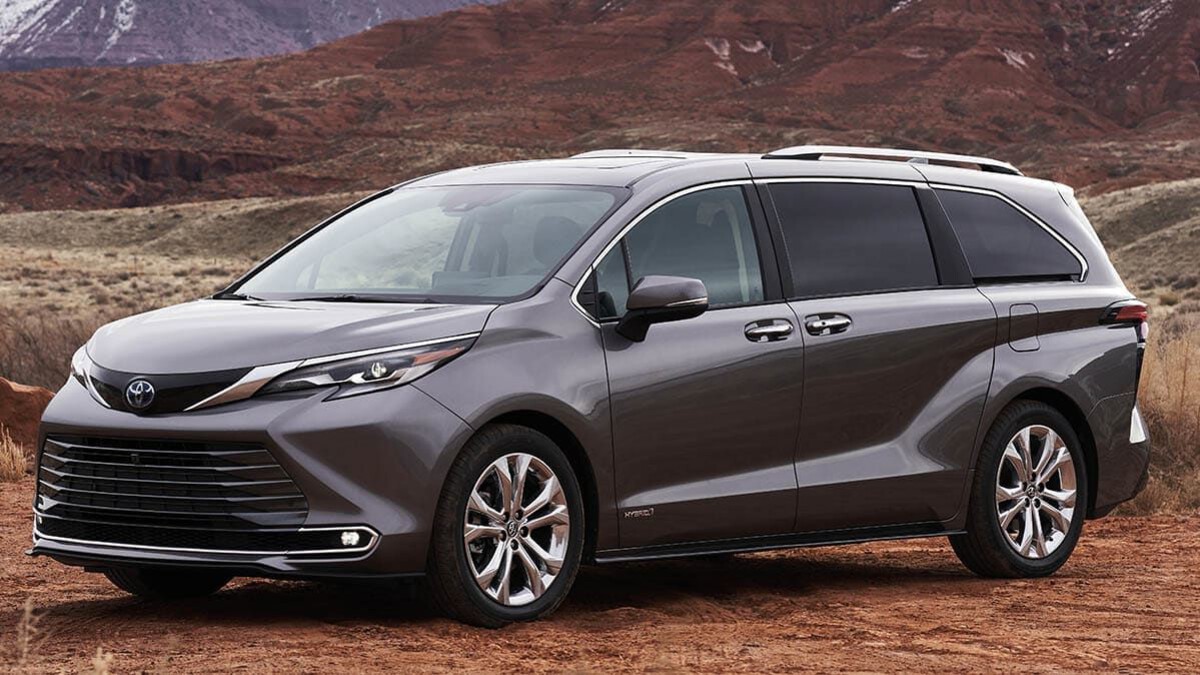
1. Chrysler Pacifica
The Chrysler Pacifica is often hailed as the gold standard of the modern minivan, and one of its most unexpectedly celebrated features is its absurd number of cupholders.
In certain trims, the Pacifica features as many as 18 cupholders—a figure that regularly stuns first-time buyers and sparks amusement in car reviews. These aren’t just arbitrarily placed, either. Chrysler’s engineers have carefully designed each seat row with multiple cupholders to serve different needs.
In the front, the driver and passenger enjoy large, deep holders built into the center console. The second row—whether configured with captain’s chairs or a bench seat—has holders built into doors, seat backs, and even slide-out trays.
The third row isn’t left out either, with molded cupholders placed into the armrests or side panels. The Pacifica doesn’t just carry people—it’s built to carry every beverage they might think of bringing along.
But why so many? The answer lies in both practicality and cultural habits. In the United States, car culture is tightly intertwined with convenience.
Long commutes, fast food drive-thrus, and the sheer size of the country have made it common for passengers to carry multiple drinks at once. A morning coffee might sit alongside a smoothie, a water bottle, or a soda picked up during an errand.
Children often carry juice boxes, sports drinks, or thermoses. Rather than risk spills or clutter, Chrysler took an aggressive approach: more cupholders than seats.
These extra compartments also serve as makeshift organizers, holding phones, snacks, or small electronics during longer drives. They reflect a deep understanding of how American families actually use their vehicles day to day.
In terms of design philosophy, the Pacifica’s layout demonstrates the importance of “family ergonomics.”
Chrysler has clearly paid attention to the daily routines of families—mornings filled with rushing to school, afternoons carting kids to sports practice, and weekends filled with road trips.
By making cupholders both abundant and strategically placed, they reduce the risk of spills in inconvenient locations, which is a major relief for parents trying to keep the cabin clean.
This attention to small details has helped the Pacifica stand out in a competitive segment. It’s not just about engine performance or infotainment systems—small touches like cupholder availability can make or break a family vehicle purchase.
Additionally, the Pacifica’s abundance of cupholders has made it a kind of cultural symbol in automotive circles. It’s frequently mentioned in car reviews, YouTube walkthroughs, and parenting blogs as the “cupholder king.”
In fact, its reputation for cupholder overkill has become something of a joke among enthusiasts, sparking comments like, “Finally, a car where every cup has its own seat.”
While it may seem like an odd thing to focus on, it speaks volumes about how consumers perceive comfort and utility.
In many ways, the Chrysler Pacifica has leaned into this reputation—embracing the idea that convenience matters as much as performance in the family minivan category. It might not be a sports car, but it definitely wins when it comes to beverage logistics.
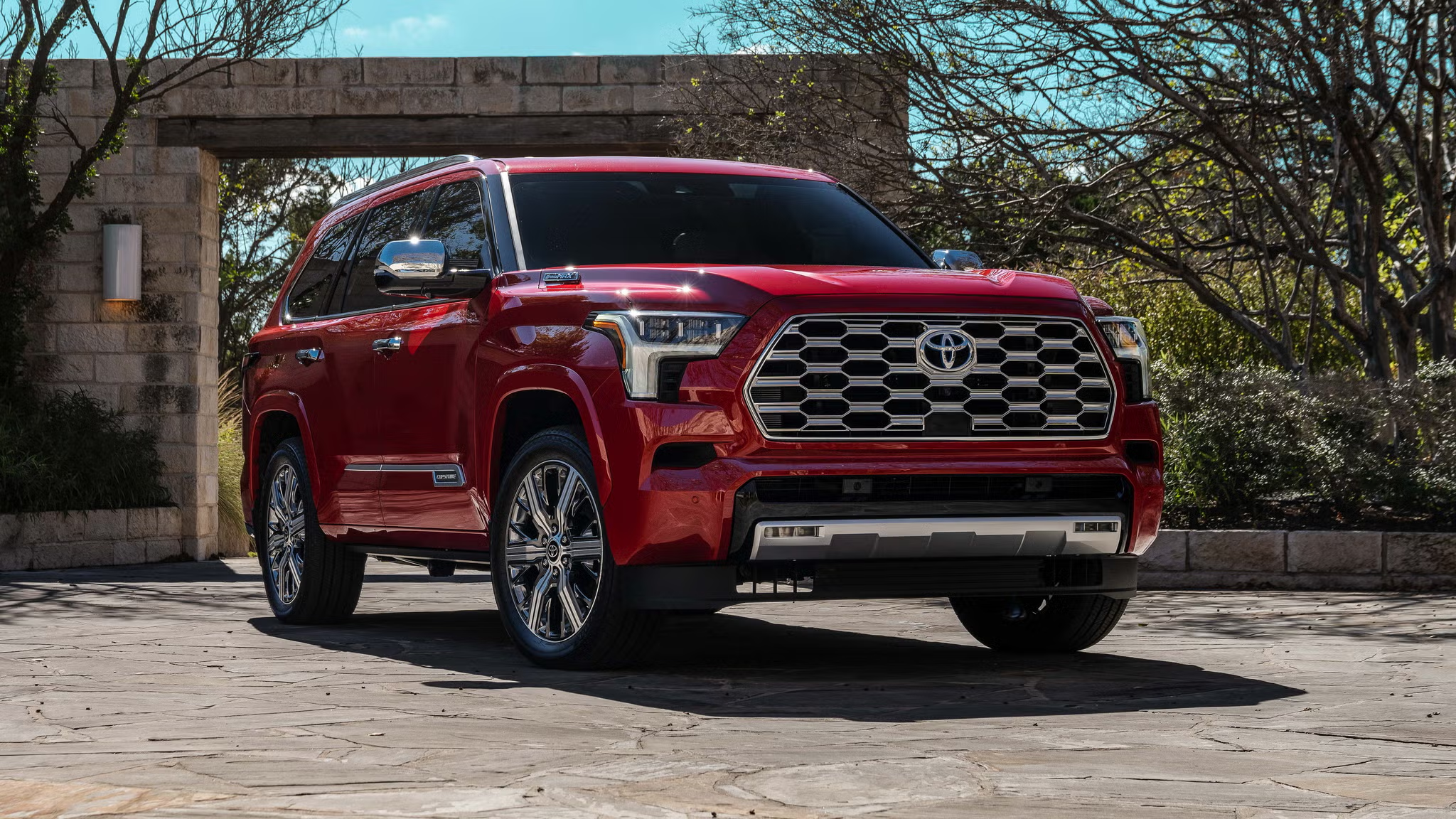
2. Toyota Sequoia
The Toyota Sequoia, a full-size SUV built for families, adventurers, and anyone who needs substantial cargo and passenger space, is another standout in the realm of cupholder excess. Depending on the trim level and configuration, the Sequoia offers up to 16 cupholders—a staggering number for a vehicle that typically seats seven or eight.
Like the Pacifica, the Sequoia is engineered with family usage in mind, so Toyota went the extra mile to ensure that each row has multiple accessible drink holders.
Front passengers benefit from large, molded holders near the shifter, while the second and third rows boast cupholders in door pockets, center armrests, and molded side compartments.
The placement isn’t just about quantity, though—it’s about usability in motion. Toyota has positioned these holders to keep drinks steady, even on bumpy terrain or long, winding road trips.
The cupholder situation in the Sequoia tells a larger story about how SUV design has evolved in recent years. Where older generations of large SUVs focused primarily on cargo and towing power, modern designs must also cater to comfort, convenience, and daily usability. Toyota understands that large families and road warriors are spending hours at a time in their vehicles.
From soccer practice and carpools to cross-country vacations, people live out of their cars in a way that makes cupholders more than a luxury—they’re a necessity.
The Sequoia delivers in this department with wide, deep cupholders that can accommodate larger tumblers, coffee mugs, or oversized water bottles, which many drivers now carry as a norm.
One of the Sequoia’s standout features is the attention to versatility in its interior layout. Some trims offer movable or retractable cupholders, particularly in the center console, allowing drivers to adapt the cabin to their needs.
For example, if you need to use the space for storage instead of holding drinks, the configuration can be adjusted. This makes the Sequoia not only cupholder-rich but also modular, which is ideal for people who frequently switch between passenger-hauling and cargo-hauling.
Toyota has clearly designed the Sequoia to be both a daily commuter and a weekend adventure machine, and its cupholder placement reflects a thoughtful approach to both those lifestyles.
Furthermore, the Sequoia’s high cupholder count is a reflection of Toyota’s broader understanding of the American market.
While Toyota’s sedans and smaller vehicles, especially outside the U.S., often keep cupholders to a minimum, their American-market SUVs embrace American driving habits head-on. Big cups, long drives, and on-the-go meals are part of the culture, and the Sequoia is clearly designed with these factors in mind.
It competes with the Chevrolet Tahoe, Ford Expedition, and Nissan Armada—all of which offer generous cupholder counts—but Toyota has managed to stay at the top of the pack by combining utility with luxury.
The Sequoia isn’t just spacious and powerful—it’s an SUV that says, “Bring your coffee, your water, your soda, and your kids’ juice boxes—we’ve got room for all of it.”
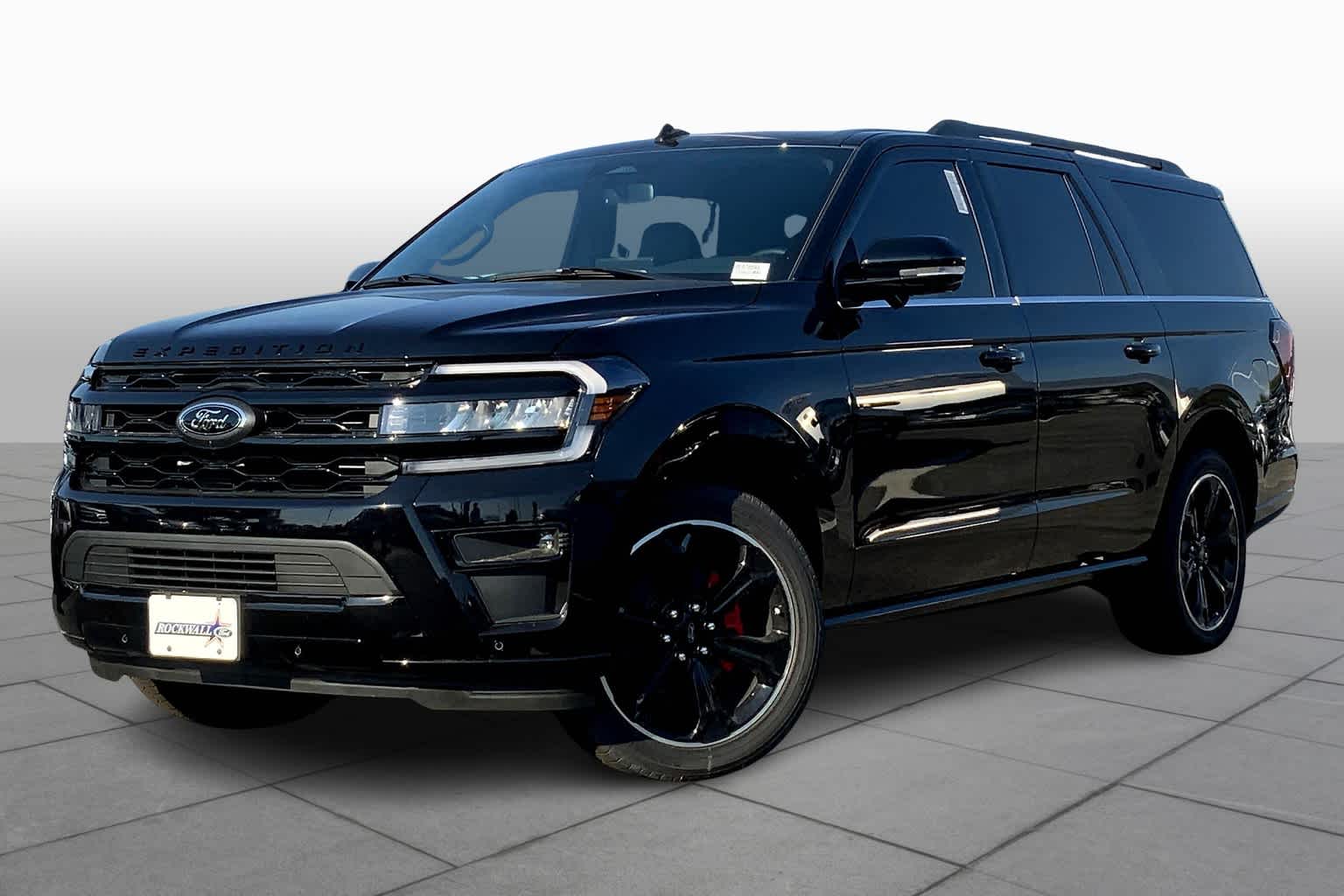
4. Ford Expedition
The Ford Expedition is a full-size SUV that doubles as a fortress of functionality and comfort, and yes, cupholders are part of its arsenal. Offering up to 15 cupholders in certain trims, the Expedition is designed to meet the needs of large families, road-trippers, and those who spend extended time in their vehicle.
It’s not just about hauling people—it’s about hauling all their drinks too. In the front cabin, the Expedition provides oversized cupholders in the center console, designed to accommodate everything from a morning coffee to a 32-ounce insulated bottle.
The second row, depending on whether it’s equipped with captain’s chairs or a bench seat, features cupholders in door panels, center consoles, and in armrests.
Even the third row, often overlooked in many large vehicles, includes multiple cupholders integrated into the side panels, ensuring that no one is left fumbling for a place to set their drink.
Ford has taken a no-nonsense approach to cupholder design in the Expedition. Unlike some vehicles that attempt to hide them away in creative but impractical locations, the Expedition keeps things simple and sturdy. This SUV was built with utility in mind, and that includes accommodating large beverage containers and minimizing spillage.
The holders themselves are deep and wide, and many include rubber grips to secure drinks during rough rides or sharp turns. In higher trims, you’ll even find illuminated cupholders in the front row—an unexpectedly premium touch that makes grabbing a drink in the dark less of a blind guess.
Ford understands that this vehicle will likely be used for everything from family vacations to tailgating, so cupholders are part of a bigger lifestyle design.
An often underrated feature of the Expedition’s interior is its modular storage architecture, which indirectly benefits cupholder usability. Large center consoles often double as open storage compartments and drink stations.
In some trims, the armrest area is large enough to hold a small cooler, and the surrounding cupholders are designed to accommodate this usage. Second-row cupholders often serve dual purposes, functioning as snack holders or even tech stands for tablets when flipped up.
In this way, Ford has created an environment where cupholders are part of a broader system of in-car convenience and entertainment. It’s not just about drinks—it’s about creating a comfortable mobile environment for long hauls and daily commutes alike.
The Ford Expedition’s generous cupholder count aligns closely with American automotive trends. Large SUVs have become the new family haulers, replacing minivans in many households, and that means they need to match—or exceed—the practicality of their predecessors. Ford’s attention to beverage logistics shows a clear awareness of this shift.
Families now expect vehicles that can multitask: carrying kids, groceries, tech gear, and, naturally, a round of drinks for every occupant. The Expedition doesn’t just deliver on this expectation—it embraces it.
Whether you’re navigating the school pickup line or heading to the mountains for the weekend, the Expedition is one of those rare vehicles where no one has to share a cupholder.
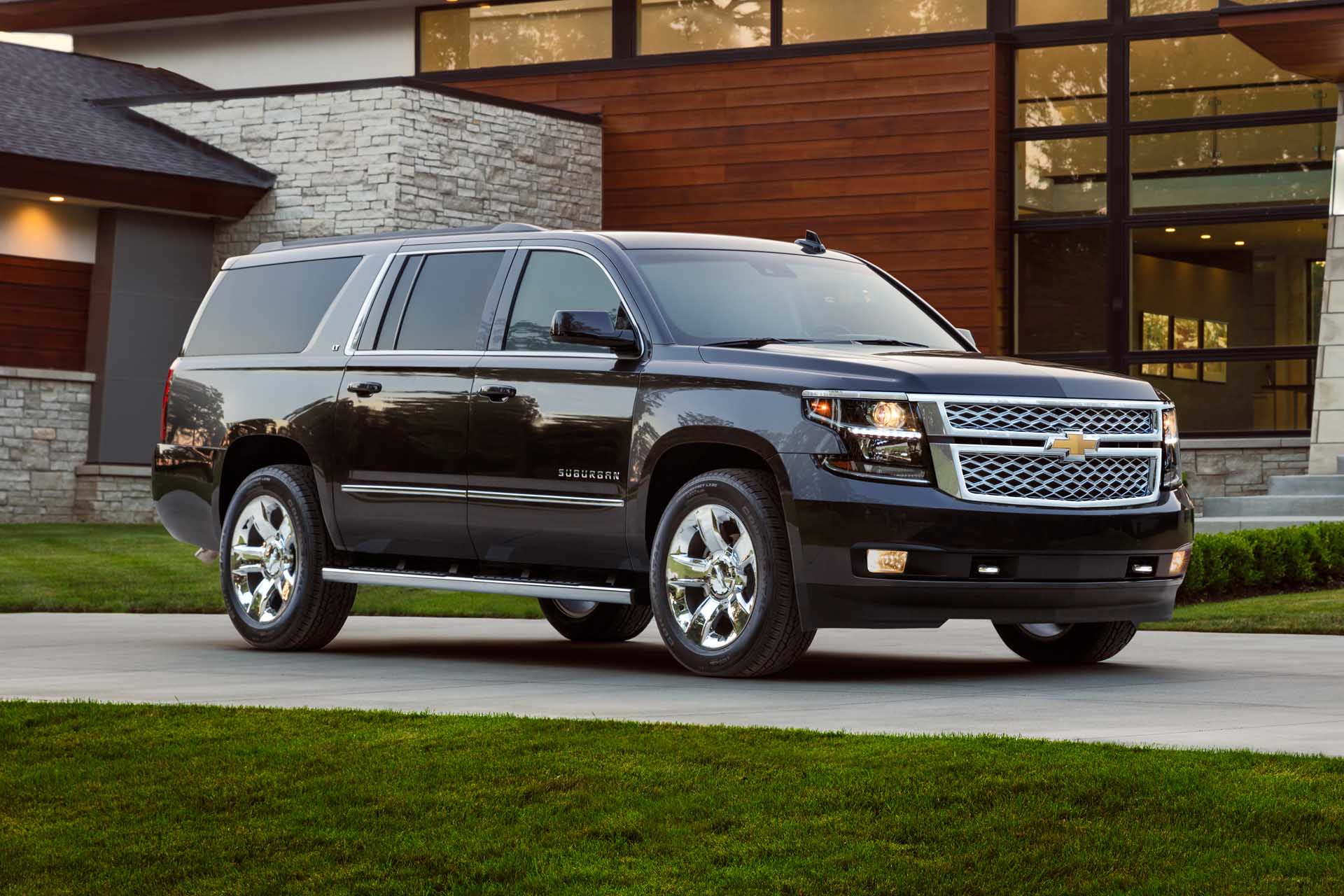
5. Chevrolet Suburban
The Chevrolet Suburban is not just an SUV—it’s a rolling living room. Known for its massive size, extensive interior space, and utility-first design, the Suburban also earns its place on this list with up to 14 cupholders, depending on the trim and configuration.
For a vehicle that can seat up to nine people, that number makes sense—but it’s the way Chevy distributes and designs these cupholders that sets the Suburban apart.
In the front row, you get deep, wide holders built into the center console, clearly meant for large travel mugs or water bottles.
In the second and third rows, cupholders are integrated into doors, seat backs, center consoles, and rear paneling. Every passenger gets at least one, and in some cases two, easily accessible spots for their drinks.
What makes the Suburban’s cupholders particularly effective is their usability under all conditions. Whether the vehicle is cruising smoothly down the interstate or bouncing along a gravel path, the holders are deep and snug enough to keep drinks from toppling over.
Chevrolet understands that the Suburban isn’t just used in suburban driveways—it’s a workhorse vehicle for rural families, off-roaders, and vacationers hauling campers or boats.
Some versions of the Suburban even feature cupholders with adjustable grips or removable rubber inserts for easier cleaning and drink size adaptability.
That kind of practical thoughtfulness elevates the experience from “standard feature” to a well-engineered detail that enhances everyday use.
The Suburban’s cupholder layout also reflects its premium aspirations. In upper trims like the High Country or Premier, cupholders are paired with extra amenities like wireless charging pads, ambient lighting, and integrated storage spaces.
Rear passengers get access to their own climate controls and entertainment screens—complete with conveniently placed cupholders for sipping on drinks while enjoying movies or games.
This kind of thoughtful interior planning is key to why the Suburban remains a favorite for long-distance travelers and large families. It doesn’t just move people—it makes them comfortable during the ride.
Cupholders may seem minor in the grand scheme of things, but in a vehicle this large, having them thoughtfully placed in every corner turns the space into something livable.
Culturally, the Chevrolet Suburban represents an icon of American automotive identity, and the presence of numerous cupholders only reinforces this image.
It’s a vehicle designed for road trips, tailgates, drive-thru dinners, and multi-hour hauls. In that context, 14 cupholders feel less like an indulgence and more like a necessity.
With Americans frequently carrying reusable water bottles, coffee tumblers, protein shakes, and soft drinks—all at once—it’s clear that having plenty of secure drink storage is more than just a convenience.
For many buyers, it’s a quality-of-life feature. The Suburban’s cupholders reflect its status as a luxury family hauler, rugged work vehicle, and long-distance tourer all rolled into one.
5 with barely any
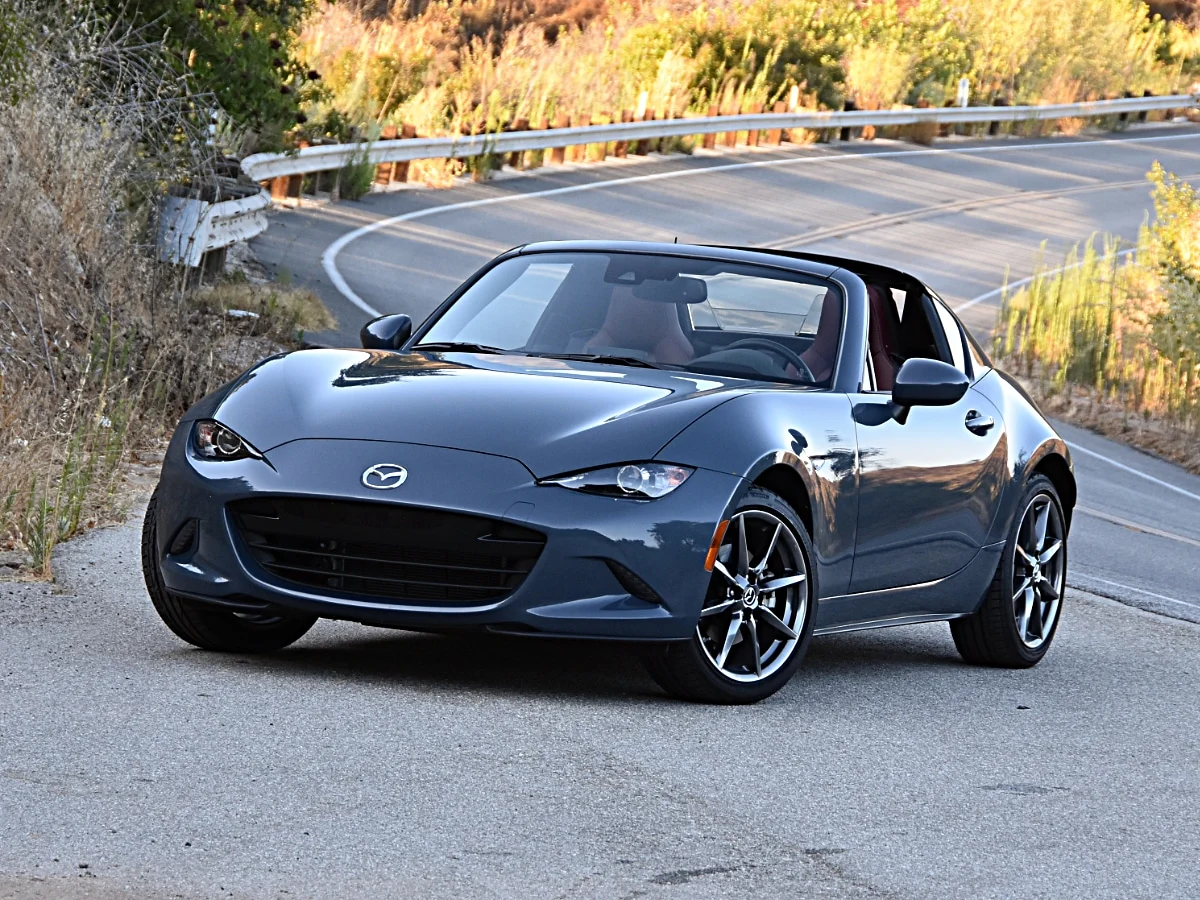
1. Mazda MX-5 Miata
The Mazda MX-5 Miata is one of the most beloved sports cars in the world. It’s praised for its near-perfect weight distribution, responsive handling, and affordable fun factor.
But one thing it’s not praised for? Cupholders. In fact, the Miata has become somewhat of a poster child for cupholder complaints.
In several generations—including the NC and ND models—the car features only two cupholders, and they’re often awkwardly placed, with at least one usually tucked behind the passenger’s right elbow.
For a car that delivers driving thrills in spades, the Miata fumbles the basics of beverage storage. The reason behind this is partly philosophical.
Mazda has long championed a design ethos they call Jinba Ittai, which translates to “horse and rider as one.”
The goal is to create a car that feels like an extension of the driver’s body. That means everything non-essential is stripped away to maintain lightness, focus, and simplicity.
Cupholders, in this context, are not a priority. Their positioning and usability become secondary to more critical elements like shifter placement, pedal feel, and seat ergonomics. In other words, Mazda’s engineers weren’t building a road tripper—they were building a canyon-carving machine.
Unfortunately, for real-world driving, this design ideal collides with practical reality. Even spirited drivers need hydration, and the Miata’s cupholders are widely criticized for being shallow, unstable, or just plain inconvenient.
Drinks often block access to the infotainment knob or HVAC controls. In earlier models, some cupholders were located directly in the center console behind the elbow—difficult to access without turning awkwardly in your seat.
Others were removable and clipped onto the side of the dashboard, which looked and felt like an aftermarket compromise rather than an integrated design. It’s not uncommon for drivers to simply toss drinks on the passenger floor or between their legs, especially if they’re driving solo.
This limitation has become a kind of inside joke among Miata owners. You’ll find entire forum threads, YouTube videos, and memes dedicated to mocking or problem-solving the car’s lackluster cupholder game.
Many owners end up buying aftermarket cupholder solutions—whether it’s 3D-printed inserts, console modifications, or suction-based mounts for the door or dash.
There’s even a niche market of Miata-specific accessories designed solely to address this one issue. It speaks volumes that a car with such a loyal fanbase can still spark consistent complaints over something as minor—but—persistent—as cupholders.
Interestingly, the Miata’s failure to offer convenient drink storage hasn’t hurt its popularity. If anything, it’s reinforced its reputation as a “pure” driver’s car. When you buy a Miata, you’re signaling that you care more about cornering feel than creature comforts.
You’re willing to trade in cupholders, cargo space, and even a back seat for the sake of connection with the road. But this tradeoff does draw a clear line: the Miata is not for people who commute long distances or live life on the go with a venti iced coffee in hand.
It’s a weekend toy or enthusiast’s dream—not a daily driver for someone juggling errands and coffee runs. Still, there’s an argument to be made that Mazda could’ve done better.
Other compact sports cars—like the BMW Z4 or Audi TT—manage to blend performance with a touch of convenience. They offer cupholders that don’t interfere with the driving experience or feel like an afterthought.
Mazda’s refusal to prioritize something as simple as functional cupholders might come across as stubborn or tone-deaf to some. After all, even the most spirited drivers have to hydrate.
A driving machine can still accommodate the human being behind the wheel. For all its glory, the Miata still leaves something to be desired when it comes to modern-day usability.
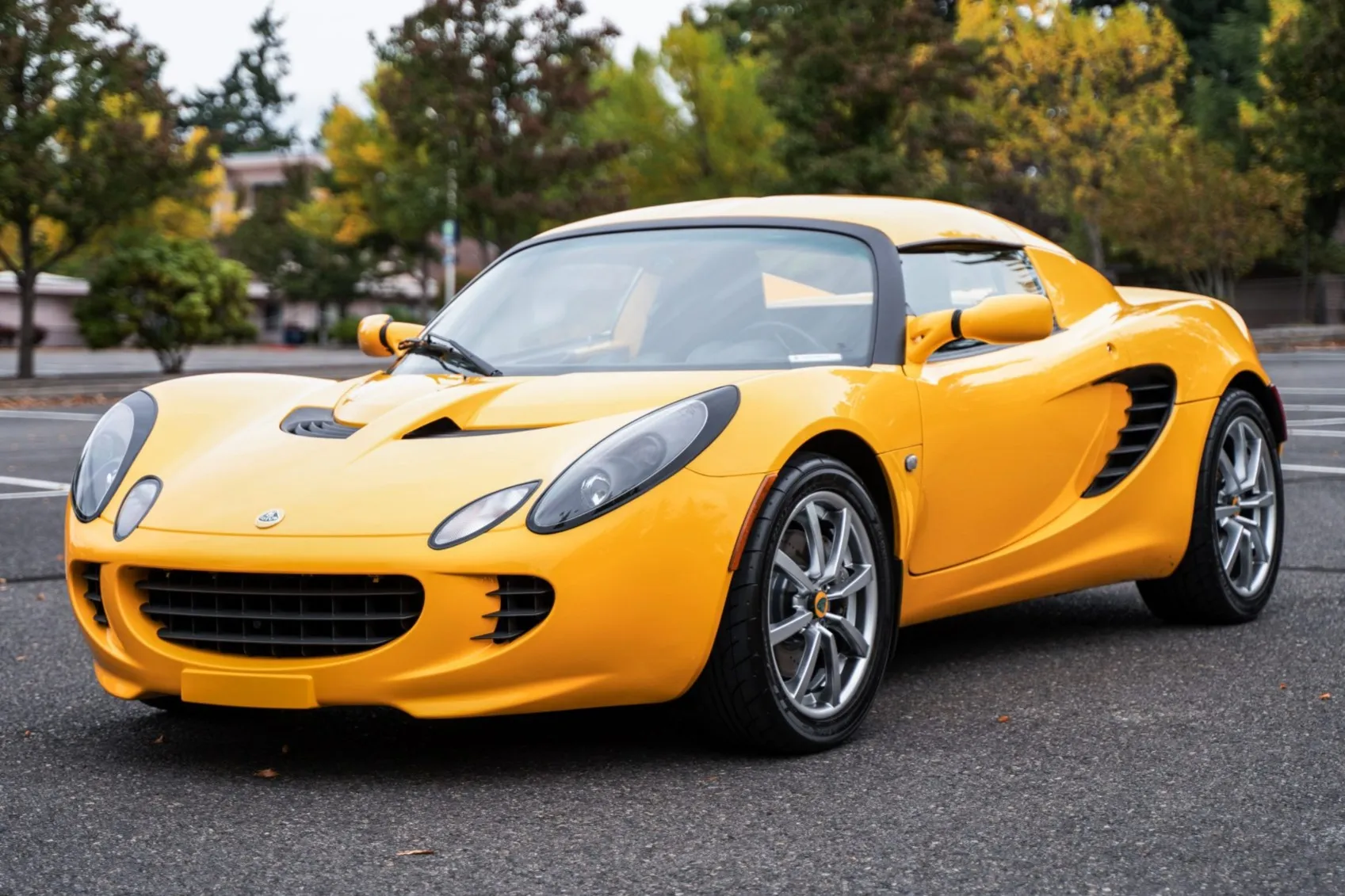
2. Lotus Elise
The Lotus Elise is the ultimate expression of British minimalist sports car engineering. Built with a laser focus on weight reduction and track performance, the Elise offers a purist driving experience—at the cost of nearly all daily comforts.
It’s no surprise, then, that this car offers either a single cupholder or, in some models, none at all. The design philosophy behind the Elise treats cupholders as unnecessary luxuries.
In a car where carpets, radios, and air conditioning are optional, beverage storage is almost laughably out of place. For Lotus, every gram counts, and a cupholder—even a small one—is considered extra weight and a potential distraction from the art of driving.
The Elise was engineered to do one thing well: deliver an unfiltered, tactile connection between driver and machine. There’s a rawness to the experience—unassisted steering, harsh suspension, loud cabin—that reminds you this car isn’t meant for Starbucks runs.
It’s built for track days, winding roads, and enthusiasts who want to feel every pebble under the tires. From this perspective, the lack of cupholders actually enhances the car’s ethos.
You’re not supposed to be sipping on a latte—you’re supposed to be wringing out every ounce of performance on a backroad or circuit.
That said, the car’s spartan design presents some real-world challenges. Long drives can become uncomfortable, and with no practical spot for a water bottle, staying hydrated becomes an issue. Most Elise drivers resort to stuffing drinks in a passenger footwell or wedging them into a seat corner.
The interior is so tight and unforgiving that even bringing a bottle can feel like a logistical issue. In most trims, the only available “cupholder” is an optional, shallow plastic ring integrated into the console—or more accurately, bolted on awkwardly in a way that screams aftermarket workaround rather than engineered solution.
Owners of the Elise don’t tend to complain much, though—because they know what they signed up for. In fact, the lack of comfort features is often worn as a badge of honor in the Lotus community. “If you want cupholders,” they say, “buy a Camry.” But this attitude comes with tradeoffs.
As the Elise aged and new markets opened up—particularly in the U.S.—some buyers were turned off by the lack of modern conveniences.
Lotus made slight improvements in later models (such as offering removable cupholders as dealer accessories), but never fully embraced the idea of integrating convenience features into its cars. It stuck firmly to its purist roots.
The Elise’s situation raises an interesting question: Where’s the line between performance purity and usable design? Some argue that a driver-focused car should include only what’s necessary. Others believe a sports car can deliver thrills without ignoring basic needs.
The Elise falls squarely in the former camp, but as the car world shifts toward electrification and comfort, this kind of barebones vehicle becomes harder to justify outside of niche circles.
The lack of cupholders might not be a dealbreaker, but it’s emblematic of a car that refuses to compromise—even if that makes everyday driving more difficult.
Ultimately, the Elise represents a dying breed in the automotive world—one where raw performance trumps all else. And in that world, there simply isn’t room for cupholders.
For those who understand the car’s philosophy, it’s part of the charm. But for those looking for even a hint of practicality, the Elise is unapologetically uninterested in accommodating your hydration habits.
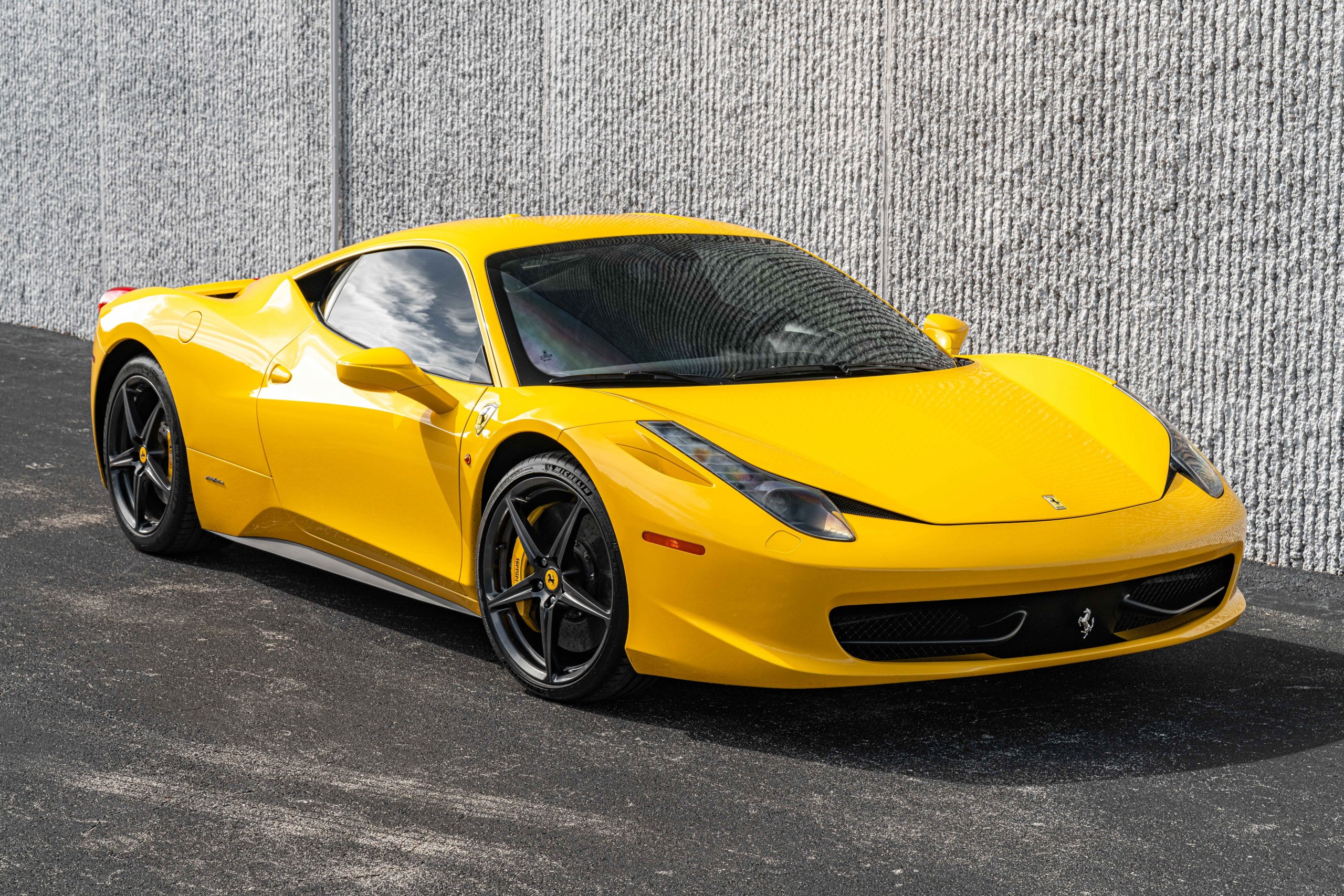
3. Ferrari 458 Italia
The Ferrari 458 Italia, a mid-engine V8 masterpiece, represents a pinnacle of Italian design and performance.
From the hand-stitched leather seats to the symphonic engine notes, every inch of the 458 was crafted with passion and precision. But one thing it wasn’t crafted with? Cupholders.
In typical Ferrari fashion, cupholders were seen as beneath the car’s exotic identity. Early models offered none at all, and later iterations introduced a tiny, shallow slot in the center console—clearly not designed for actual use.
It’s an afterthought, if that. Ferrari didn’t build the 458 for coffee lovers; it built it for purists, performance junkies, and those who equate driving with art.
Ferrari’s stance on cupholders aligns with a broader ethos shared by many supercar manufacturers: luxury is not convenience—it’s exclusivity.
In the 458’s cabin, the emphasis is on driver engagement. The cockpit wraps tightly around the pilot, with every control angled toward the steering wheel.
The minimalist dashboard avoids distractions, and the small storage spaces reflect a belief that if you’re driving a Ferrari, you’re not doing errands—you’re doing passion. A cupholder doesn’t just seem unnecessary—it almost feels sacrilegious.
However, for owners who use their 458s for more than the occasional track day or Sunday blast, the lack of cupholders can be frustrating.
Some owners have gone to great lengths to solve the problem—using suction mounts, seat-gap fillers, or even custom-fabricated inserts that clip into air vents. But none of these feel right in a Ferrari.
It’s a car that begs to be kept clean and elegant. Sticking a Big Gulp or a travel mug next to a carbon fiber panel and Italian leather just feels wrong, which is likely exactly what Ferrari intended. They don’t want your drink inside their car—they want your attention on the road.
The lack of cupholders has also become a bit of a status symbol in its own way. Ferrari owners (and the brand itself) often take pride in the fact that their cars aren’t “daily drivers” like a Lexus or BMW.
The absence of practical features like cupholders helps reinforce that identity. It’s a subtle, even snobbish, way of saying: “This isn’t a car for Starbucks runs.”
But even as this reinforces Ferrari’s brand identity, it alienates drivers who want a touch more real-world utility without giving up supercar performance.
Interestingly, in more recent models like the Ferrari Roma and 296 GTB, Ferrari has started to loosen up slightly, integrating cupholders more discreetly into the interior. This shift likely reflects pressure from newer, younger buyers who want their supercars to fit into a more everyday lifestyle.
The 458, however, remains a holdout from the previous era—one where driver focus came first, second, and third. And in that era, cupholders had no place.
At the end of the day, owning a 458 Italia means accepting the quirks that come with a high-performance machine.
If you want blistering acceleration, sublime steering, and drop-dead looks, you’ll have to live without some comforts—including somewhere to put your drink. It’s part of the car’s DNA: passionate, purposeful, and unapologetically inconvenient.
4. Porsche 911 (996 Generation)
The 996-generation Porsche 911, produced from 1997 to 2006, is both revered and reviled among Porsche enthusiasts. It was the first water-cooled 911, marking a major shift in the lineage, and introduced numerous changes—some controversial, others long overdue.
One of the most baffling quirks of the 996, though, is its bizarre and nearly useless cupholder design. In early models, cupholders were non-existent.
In later versions, Porsche added a pair of fold-out plastic arms above the glovebox, which looked more like coat hooks than actual beverage holders. They were fragile, shallow, and absolutely incapable of holding anything larger than a tiny paper cup.
Why would Porsche, a brand known for precision engineering, install such absurd cupholders? The answer lies in its German roots. European carmakers, especially in the 1990s and early 2000s, didn’t prioritize cupholders because their consumers simply didn’t use them much.
Drinking while driving isn’t nearly as common in Europe as it is in North America, where long commutes and drive-thrus make drink holders a necessity. Porsche engineers likely saw cupholders as a marketing concession, not a core design feature, and treated them accordingly.
The fold-out arms themselves became infamous for breaking or sagging under the weight of even modest drinks.
They didn’t lock into place very well, and spills were common if drivers took sharp turns or hit potholes. Porsche loyalists might forgive many things in the name of performance, but the 996’s cupholders remain one of the most consistent gripes among owners.
Ironically, aftermarket solutions for 996 cupholders became quite popular, with some owners installing third-party consoles or vent-mounted systems to avoid the flimsy factory setup.
Despite these issues, the rest of the 996’s interior wasn’t completely Spartan. The car offered decent leather finishes, automatic climate control, and even a basic infotainment system.
But the cupholders always felt like a misstep—an unrefined patch in a car that was otherwise a fine-tuned machine.
Porsche eventually addressed the issue in later 997 and 991 generations, offering more stable and better-placed cupholders, but the 996 remains a symbol of the brand’s old-school indifference to such everyday details.
In the broader context of automotive design, the 996 generation is often remembered as a transition point. It bridged the gap between Porsche’s air-cooled heritage and modern comfort-driven luxury.
The poorly designed cupholders serve as a symbol of this awkward middle ground, where performance still trumped usability, but pressure was mounting to bring Porsches closer to daily-driving practicality.
Ultimately, the 996’s cupholders are a small but telling flaw in a car that otherwise delivers on many fronts. They remind us that even elite automakers can struggle with the basics when cultural norms clash with consumer expectations.
While Porsche eventually learned the value of a well-placed cupholder, the 996 shows what happens when an automaker underestimates how much that small piece of plastic can matter.
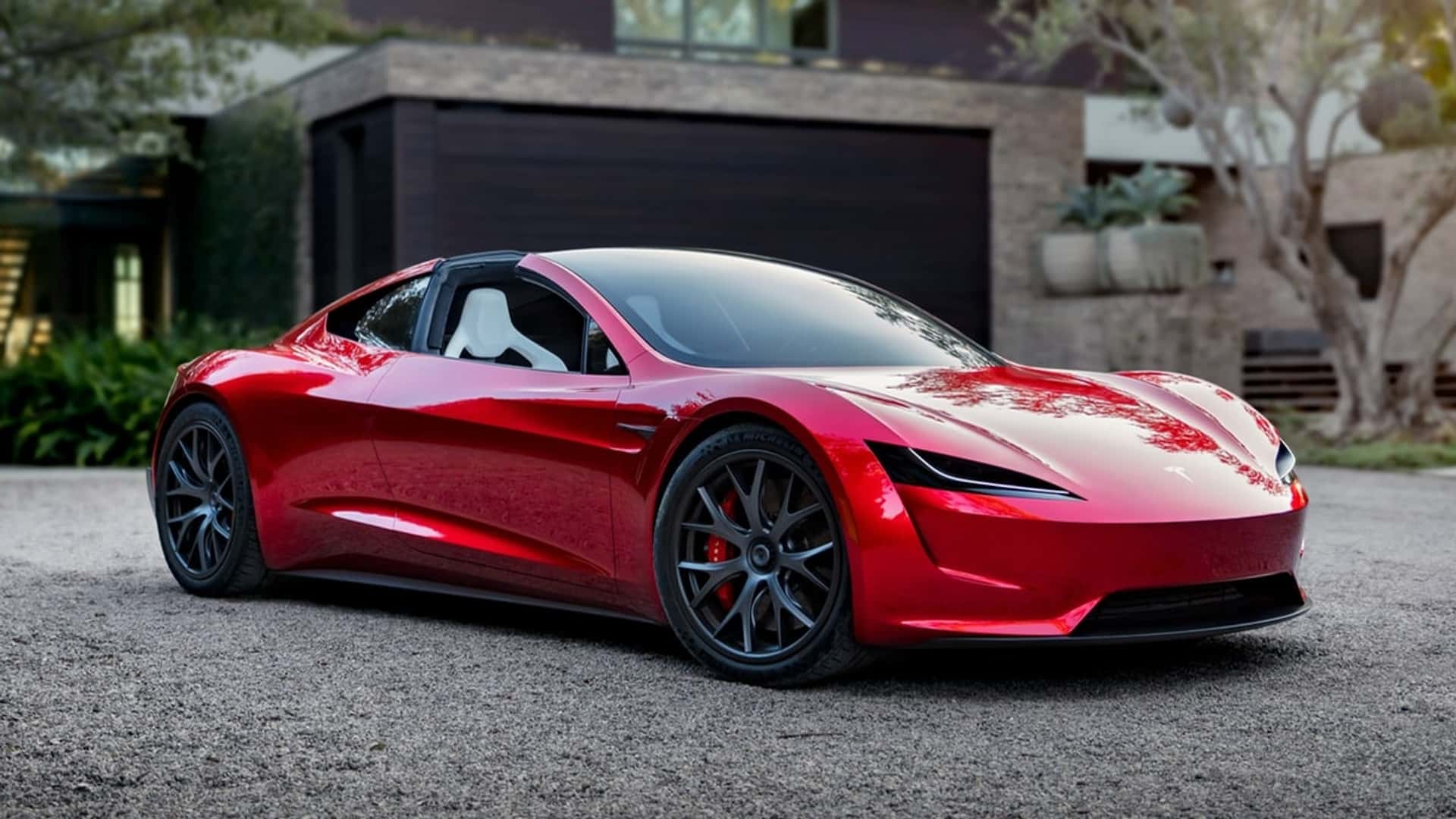
5. Tesla Roadster
The original Tesla Roadster, built between 2008 and 2012, marked Tesla’s debut into the automotive world—a bold electric sports car built on the chassis of the Lotus Elise.
Much like its British cousin, the Roadster inherited not only the tight cabin and minimalist setup, but also the near-total lack of cupholders.
Some versions had one extremely shallow holder, while others had none at all. It was clear from the start that Tesla, like Lotus, wasn’t prioritizing coffee storage in its early experiments with electric performance.
The car was famously cramped and raw, designed more to prove electric power was viable than to offer a luxury experience. Cupholders were almost a joke.
The available holder—if present—was located in the center tunnel, close to the emergency brake and gear selector, making it awkward to reach. It wasn’t deep or adjustable, and it wasn’t made for travel mugs or larger bottles.
Tesla’s early design team seemed far more focused on battery placement and software than on the creature comforts drivers might expect.
Consumer feedback quickly highlighted this as a pain point. Many early adopters of the Roadster were Silicon Valley tech enthusiasts used to having their coffee or protein shakes in the car.
The lack of usable cupholders stood out in a vehicle that was already asking buyers to make a lot of compromises in exchange for early access to electric performance.
Tesla learned from this misstep and radically changed its approach in future models like the Model S and Model 3, which feature multiple, deep, and well-integrated cupholders.
Interestingly, the lack of cupholders in the original Roadster almost adds to its collector value today. It reminds buyers and enthusiasts just how far Tesla has come—from startup quirks to mainstream usability.
The car’s absence of basic amenities like drink holders is symbolic of its raw, experimental roots. In hindsight, it’s part of the charm, even if it was frustrating at the time.
The first-gen Roadster exists in a strange place: part sports car, part science project. The fact that you couldn’t safely carry a cup of coffee in it just underlines how radical and early the car was.
It wasn’t designed to be convenient. It was designed to challenge the automotive industry and make a point. And in that mission, cupholders were irrelevant.
Tesla has since evolved into a brand that understands how crucial the small things are. Today, their interiors feature slick, minimalist aesthetics and smart ergonomics.
The Roadster 1.0, though, remains a snapshot in time—a vehicle that asked for complete dedication from its drivers. And one of the many prices they paid was nowhere to put their drink.
Also Read: 5 Chevys That Survive 400,000 Miles and 5 That Don’t See 100K
When we step into a vehicle, we rarely think about cupholders until we reach for a drink and realize—either with a sigh of relief or a twinge of frustration—whether they’re available or not.
And yet, after examining these ten vehicles, it’s clear that cupholders are far more than an afterthought. They are the tip of a much larger design iceberg, revealing the priorities, compromises, and philosophies of some of the world’s most iconic automakers.
On one end, we have cars like the Chrysler Pacifica, Honda Odyssey, and Chevrolet Suburban, all packed with an astounding number of cupholders—often 15 or more. These vehicles reflect a design ethos deeply rooted in North American lifestyles, where cars often double as family rooms, snack bars, and mobile offices.
In such vehicles, convenience reigns supreme. The abundance of cupholders ensures that every member of the family—from the toddler in the third row to the parent in the front seat—can keep their drinks, devices, and snacks within arm’s reach.
For these vehicles, cupholders are not just amenities—they are survival tools for the modern, multitasking family.
Then there are cars like the Lotus Elise, Ferrari 458 Italia, and Mazda Miata, which actively challenge our expectations of what should be inside a vehicle. In these cars, cupholders are either laughably impractical or entirely absent. This isn’t due to oversight—it’s a deliberate choice.
These cars weren’t built for the everyday grind. They were built to thrill, to grip the road, and to forge an emotional bond between car and driver.
Including convenient beverage storage might dilute that mission, at least in the eyes of the designers. The absence of cupholders becomes a statement of intent: this machine is about driving, not sipping.
But what makes this contrast so fascinating is that it underscores how cars are deeply cultural products.
They are shaped not only by engineering decisions but also by assumptions about how we live our lives. In America, where fast food and road trips dominate, cupholders are standard, expected, and appreciated.
In Europe or Japan, where commutes are shorter and dining behind the wheel is rare, cupholders may be seen as less important, or even unnecessary.
This global variation shows how something as small as a cupholder can become a lens through which we understand not just cars—but cultures.
Even among performance vehicles, there’s a growing shift. Tesla, for instance, began its journey with the Roadster, which had essentially no cupholder to speak of.
But as it grew and appealed to more mainstream buyers, Tesla’s interiors evolved. Now, the Model S, Model 3, and upcoming vehicles feature highly functional cupholders—blending tech-savvy innovation with creature comforts.
This evolution suggests that even the most forward-thinking companies recognize that practicality and performance don’t have to be mutually exclusive.
In the end, cupholders matter—not because we love them for their own sake, but because they represent the balance (or imbalance) between lifestyle and purpose.
A car loaded with cupholders invites us to live in it. A car that shuns them dares us to experience something more focused, maybe even transcendent.
Neither approach is inherently better; both serve different drivers and different desires. What’s important is recognizing what these details say about a car’s soul.
So the next time you slide behind the wheel, take a second to glance at the cupholder. It might seem small, but it tells you a lot. Is your car inviting you to settle in and enjoy the ride, coffee in hand?
Or is it challenging you to focus, grip the wheel, and drive like you mean it—with no distractions? Either way, the story is there, written not just in torque specs or touchscreen size—but in that little slot by your gearshift.

